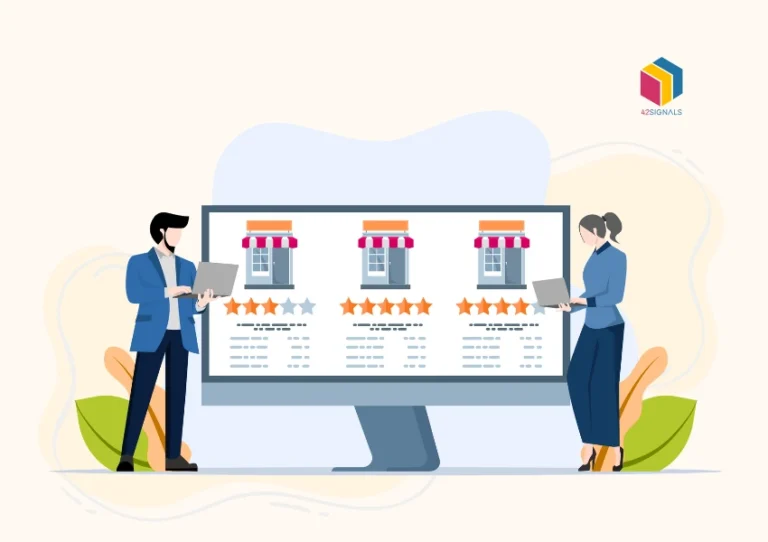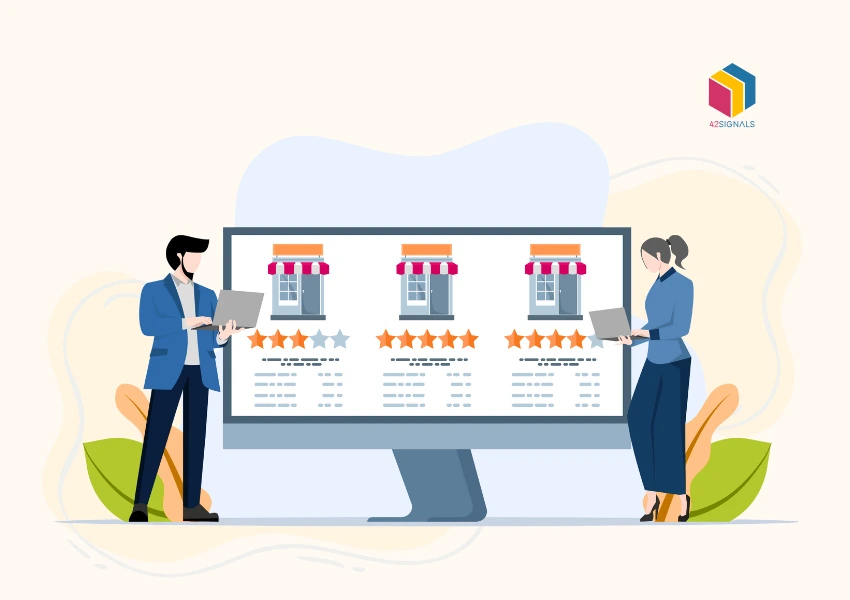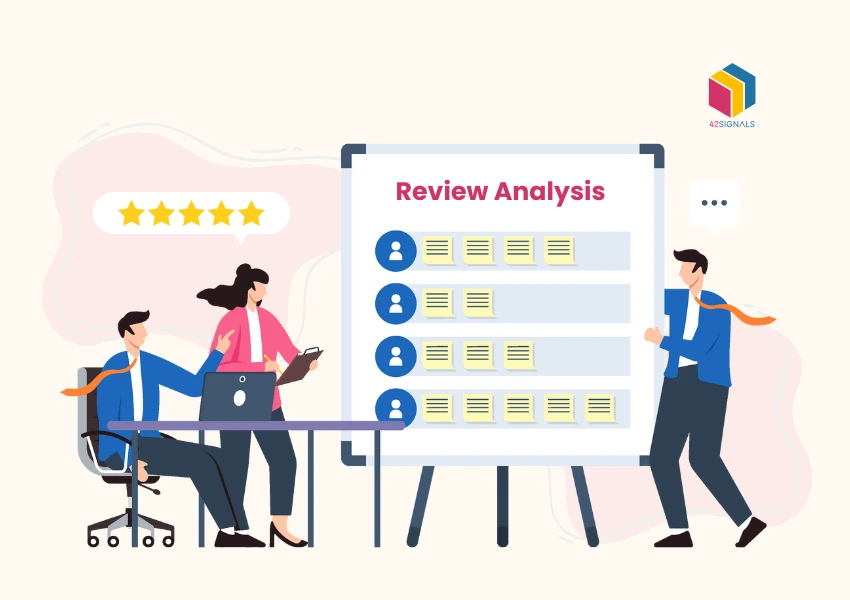Table of Contents
ToggleAlthough it may come as a surprise, approximately 71% of modern consumers expect personalization and businesses to understand their unique requirements and expectations. Due to the accelerated expansion witnessed year after year in the ecommerce sales domain, prioritizing personalization principles carries unparalleled weight and urgency. Anticipated global market valuation reaching approximately $8 trillion by 2027 accentuates the imperative nature of formulating solid ecommerce sales strategies. Among those vital components deserving prominence in any comprehensive plan would undoubtedly be the implementation of tailored suggestion mechanisms.
The Impact of Personalized Recommendations in ECommerce Sales Strategies
Personalized recommendations transform the ecommerce landscape by presenting specially selected products tailored to each customer’s unique behavior. This heightened degree of personalization fosters feelings of appreciation and understanding within customers, ultimately strengthening their bond with the brand. Companies utilizing sophisticated algorithms for this purpose observe substantial improvements across vital performance indicators:

• Increased Conversion Rates with ECommerce Sales Strategies
Tailored suggestions cut through product overload by surfacing immediately relevant items. This reduces decision fatigue, shortens the purchase journey (“I found it quickly!”), and directly translates to more completed sales. Recommendations act as a powerful “next best action” guide.
• Higher Average Order Value
Strategic personalization drives revenue beyond the initial item. By analyzing cart contents or browsing history, systems can suggest truly complementary products (cross-sell) or premium alternatives (upsell) at the optimal moment (e.g., cart page, product page). Customers perceive this as helpful, not pushy, and increasing the basket size.
• Enhanced Customer Loyalty
Consistently meeting individual needs fosters a sense of being understood. This builds emotional connection and trust, turning shoppers into repeat buyers. Personalized post-purchase follow-ups (like “You might also like…” or replenishment reminders) keep your brand top-of-mind and encourage long-term relationships.
• Richer Data Insights
Every click, view, and purchase feeds a powerful feedback loop. This data reveals nuanced behavioral patterns, emerging trends, and unexpected product affinities. Businesses gain actionable intelligence to refine inventory, marketing, and the recommendation algorithms themselves, creating a self-optimizing system that gets smarter over time.
This targeted approach creates a virtuous cycle, benefiting both ecommerce sales strategies and the customer’s shopping journey.
• Reduced Decision Fatigue & Improved User Experience
Personalized curation simplifies shopping by filtering irrelevant options. Customers feel less overwhelmed, enjoy a smoother journey, and are more likely to return to a platform that “gets them.” This translates directly to higher engagement metrics (time on site, pages viewed).
• Competitive Differentiation
In crowded markets, sophisticated personalization becomes a key differentiator. Offering a uniquely relevant experience that competitors lack builds a sustainable advantage and positions your brand as innovative and customer-centric.
• Lower Return Rates
By surfacing products better aligned with a customer’s demonstrated preferences and needs, personalized recommendations increase the likelihood of satisfaction upon receipt. Happy customers who get what they expect return items less frequently.
• Optimized Inventory & Campaign Performance
Data from recommendations identifies fast-moving items, hidden gems, and slow sellers. This informs smarter inventory planning and allows for highly targeted, personalized promotions (e.g., “Based on your love of X, Y is now 20% off”), significantly boosting campaign ROI.
• Mobile Experience Optimization with ECommerce Sales Strategies
On smaller screens, personalized “quick picks” and streamlined suggestions are crucial for efficient navigation and conversion. Tailored recs make mobile shopping significantly more effective.
Key Considerations for Success with ECommerce Sales Strategies
- Privacy & Transparency: Build trust by being clear about data usage and offering opt-outs. Respect customer boundaries.
- Algorithm Quality: Invest in robust AI/ML that goes beyond simple “bought this, bought that” to understand deeper intent and context.
- Testing & Refinement: Continuously A/B test recommendation strategies (placement, logic, number of items shown).
- Omnichannel Integration: Ensure personalization works seamlessly across website, app, email, and even in-store touchpoints.
Data Analytics for Tailored Customer Experiences

Image Source: Faster Capital
In 2025, ecommerce analytics tools extract actionable insights from vast data troves, refining customer profiles continually. This hyper-personalization process involves:
- Monitoring purchasing patterns, browsing behaviors, and search histories
- Employing machine learning algorithms to predict future buying habits
- Incorporating customer feedback loops for experience iteration
- Integrating social media analytics to understand preferences and trends
Retailers now deliver uniquely personalized shopping experiences, sending tailored recommendations that resonate with individual consumer desires. This approach significantly amplifies conversion rates and fosters brand loyalty in competitive digital marketplaces.
ECommerce Sales Strategies, Techniques, and Technologies in 2025
In 2025, ecommerce analytics tools will harness AI-driven algorithms to create highly individualized user experiences. Key techniques include:

• Predictive Analytics
Beyond Basic History: Moves past simple “bought this, bought that” to analyze complex patterns across vast datasets (purchase history, browsing paths, search queries, dwell times, cart abandonments, demographics, seasonality, even external factors like weather).
Anticipating Needs: Proactively identifies future customer intent. Examples: Predicting replenishment needs (e.g., “You might be running low on coffee soon”), forecasting interest in new categories based on evolving behavior, or identifying customers ripe for loyalty programs.
Optimizing Inventory & Marketing: Predicts demand surges for specific products within segments, enabling dynamic pricing, targeted promotions, and optimized stock allocation. Identifies high-value customer segments for retention campaigns.
• Dynamic Content Customization
Real-Time Relevance: Website elements (banners, hero images, product grids, promotional offers, category listings, even navigation) adapt instantly based on individual user signals (location, device, referral source, current session behavior, past interactions).
Contextual Triggers: Displays specific content based on context (e.g., showing winter coats to a user in a cold climate, highlighting rain gear if local weather data shows rain, promoting lunch specials around noon).
Personalized Journeys: Creates unique user pathways. A first-time visitor might see “New Customer Offers” and top-rated items, while a returning high-value customer sees “Welcome Back” and premium recommendations based on their history.
• Machine Learning
Continuous Evolution: Algorithms don’t just use static rules; they learn and adapt autonomously. They refine models based on new interactions, feedback (clicks, purchases, ignores), and changing trends.
Sophisticated Algorithms: Employs various techniques:
Collaborative Filtering: “People like you bought…”
Content-Based Filtering: “Items similar to what you viewed/liked…”
Deep Learning: Uncovers complex, non-linear patterns in large datasets (e.g., image recognition for visual search, understanding nuanced preferences).
Optimization: Continuously A/B tests different recommendation strategies and placements to maximize key metrics (CTR, conversion rate, AOV).
• Behavioural Tracking
Granular Understanding: Captures detailed micro-interactions: mouse movements, scroll depth, clicks, hovers, video views, time spent on specific elements, rapid back-and-forth comparisons (“compare-o-later” behavior).
Intent Signaling: Identifies micro-conversions (e.g., adding to wishlist, viewing reviews, zooming on images) as strong signals of interest beyond just purchases. Pinpoints friction points in the user journey.
Attribution Modeling: Understands the complex multi-touch journey that leads to a purchase, attributing value accurately to different channels and touchpoints influenced by personalization.
• Natural Language Processing (NLP)
Beyond Basic Chatbots: Powers sophisticated conversational commerce:
Personalized Search: Understands natural language queries (“comfortable running shoes for flat feet under $100”), interprets intent, and delivers highly relevant results.
Sentiment Analysis: Analyzes product reviews, chat transcripts, and social media to gauge customer sentiment towards products, features, or the brand overall, feeding insights back into personalization engines.
Hyper-Personalized Support: Chatbots/Virtual Assistants use customer history and context to provide tailored support (“Based on your recent order of X, here’s how to solve Y”).
Content Generation: Assists in creating personalized product descriptions or email subject lines optimized for engagement.
• Augmented Reality (AR) in ECommerce Sales Strategies
Enhanced Visualization & Confidence: Allows customers to see how products truly fit into their lives.
Virtual Try-On: Apparel, eyewear, makeup.
Placement Preview: Furniture in a room, art on a wall, decor on a table.
Interactive Features: Change colors, materials, or configurations in real-time within the user’s environment.
Reduced Uncertainty & Returns: Drastically lowers purchase hesitation and post-purchase dissonance by providing a realistic preview, directly increasing conversion rates and reducing returns.
Novel Engagement: Creates memorable, interactive experiences that boost brand perception and shareability.
The Future of Personalized Ecommerce: Trends and Predictions
Progressively advancing ecommerce landscapes lead to heightened sophistication in personalization methods. Artificially intelligent and machine learning algorithm integration facilitates enhanced precision in crafting recommendations via extensive evaluation of user patterns, historical acquisitions, and social networking engagements. Furthermore, voice and visually-oriented search functionalities augment bespoke shopping encounters aligned with unique customer inclinations.
Subscription models will likely leverage personalization, suggesting new products based on past selections. Privacy regulations will shape the personalization approach, with a focus on transparent data practices. Overall, the fusion of technology and personalization is set to redefine the ecommerce landscape, making every shopping journey unique.
Implementing Personalization while Ensuring Privacy Compliance
In 2025, ecommerce sales strategies acknowledge the twin imperatives of personalization and privacy. Retailers deploy advanced algorithms and machine learning to tailor recommendations, amplifying user engagement and sales. However, to cement consumer trust, they simultaneously adhere to strict data protection laws like GDPR and CCPA. Key practices include:
- Transparent Data Usage: They inform customers about data collection methods and usage intentions clearly and openly.
- Opt-In Consent: They implement stringent opt-in protocols, ensuring consumers explicitly permit personalized marketing.
- Data Anonymization: Utilizing anonymization techniques to personalize without compromising individual identities.
- Regular Audits: Continuously conducting audits and updates to remain aligned with evolving privacy legislation.
- Secure Data Storage: Investing in robust cybersecurity measures to safeguard personal data against breaches.
Navigating personalization within ecommerce requires striking a delicate balance between curated experiences and steadfast data security measures, ensuring the utmost respect for user privacy throughout the process.
Conclusion
Personalized recommendations emerge as pivotal for retailers to amplify sales. Leveraging consumer data and predictive analytics, these tailored suggestions resonate with individual preferences, propelling conversion rates. Companies that adeptly integrate smart, personalized engines into their digital platforms observe significant lifts in customer engagement, loyalty, and revenue. As such, personalization is a cornerstone strategy, not just for augmenting sale figures but for providing a unique, consumer-focused shopping experience in 2025 and beyond.
FAQs
What is the best strategy to increase ecommerce sales?
Adopt a strategic approach focusing on new customer acquisition via SEO, PPC, email marketing, social media & influencer collaborations. Convert leads into loyal patrons through quality customer support, reasonable pricing, and user-friendly interfaces. Utilize urgent messaging, persuasion, and scarcity tactics to boost sales. Understanding customer preferences, trying various techniques, and responding swiftly are keys to triumphant ecommerce sales.
What are the strategies used in e-commerce?
Businesses use diverse strategies to excel in today’s dynamic environment. Key methods include automation for operational advancements in stock admin., request handling, and patron assistance. Multi-channel selling increases visibility and expands reach in various markets. Data analytics reveals consumer behaviors, preferences, and challenges. Material marketing, affiliate networks, and referral schemes spark user engagement and loyalty. Stay updated, exhibit meticulous attention, and adapt accordingly for masterful e-commerce strategies.
How do you drive sales on ecommerce?
Propel sales with innovative, astute, persistent measures. Differentiate your firm by presenting a unique value proposition aligned with core clientele. Create a coherent marketing scheme inclusive of targeted ads, affiliate relations, and email campaigns appealing to audiences, inspiring trust, and triggering desired actions. Simplify transactional navigation, present clear product info, smooth addition-to-cart functions, and transparent pricing. Foster long-term relationships via efficient issue resolution and feedback collection, leading to consistent sales growth.
How do you optimize ecommerce sales?
Maximize sales by assessing and fine-tuning every component of the sales pipeline. Maintain a pristine, organized website with fast loading speed and cross-device compatibility. Craft succinct yet informative product summaries enhanced by vivid visuals to convince potential clients. Price competitively while preserving profits, analyze user experience hurdles, monitor clickstream patterns, execute A/B tests, and actively collect user feedback. Sustained vigilance, creativity, and adaptability assure peak ecommerce sales performance







